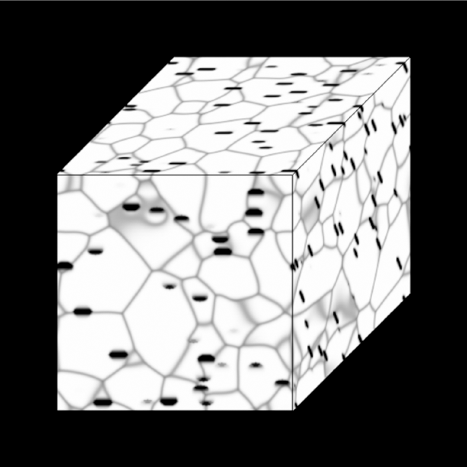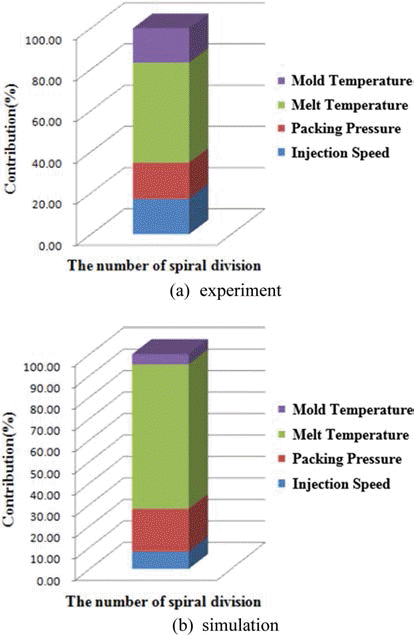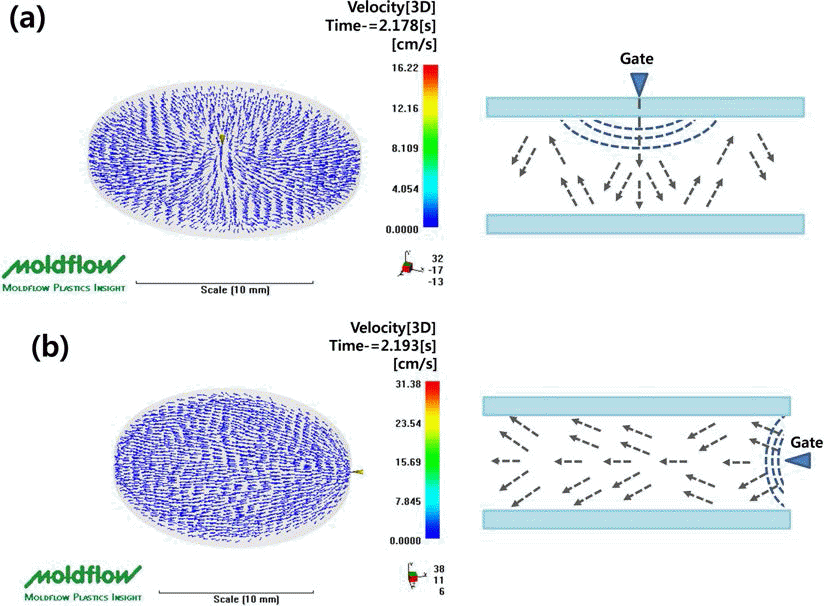Search
- Page Path
- HOME > Search
- [Korean]
- Current Trend of Second Phase Particle-grain Boundary Interaction Research using Computer Simulations
- Kunok Chang
- J Korean Powder Metall Inst. 2020;27(4):339-342. Published online August 1, 2020
- DOI: https://doi.org/10.4150/KPMI.2020.27.4.339

- 520 View
- 6 Download
-
 Abstract
Abstract
 PDF
PDF Since the interaction between the second-phase particle and grain boundary was theoretically explained by Zener and Smith in the late 1940s, the interaction of the second-phase particle and grain boundary on the microstructure is commonly referred to as Zener pinning. It is known as one of the main mechanisms that can retard grain growth during heat treatment of metallic and ceramic polycrystalline systems. Computer simulation techniques have been applied to the study of microstructure changes since the 1980s, and accordingly, the second-phase particle–grain boundary interaction has been simulated by various simulation techniques, and further diverse developments have been made for more realistic and accurate simulations. In this study, we explore the existing development patterns and discuss future possible development directions.
- [English]
- Atomistic Simulation of Sintering Mechanism for Copper Nano-Powders
- Yujin Seong, Sungwon Hwang, See Jo Kim, Sungho Kim, Seong-Gon Kim, Hak Jun Kim, Seong Jin Park
- J Korean Powder Metall Inst. 2015;22(4):247-253. Published online August 1, 2015
- DOI: https://doi.org/10.4150/KPMI.2015.22.4.247

- 1,191 View
- 10 Download
- 3 Citations
-
 Abstract
Abstract
 PDF
PDF The sintering mechanisms of nanoscale copper powders have been investigated. A molecular dynamics (MD) simulation with the embedded-atom method (EAM) was employed for these simulations. The dimensional changes for initial-stage sintering such as characteristic lengths, neck growth, and neck angle were calculated to understand the densification behavior of copper nano-powders. Factors affecting sintering such as the temperature, powder size, and crystalline misalignment between adjacent powders have also been studied. These results could provide information of setting the processing cycles and material designs applicable to nano-powders. In addition, it is expected that MD simulation will be a foundation for the multi-scale modeling in sintering process.
-
Citations
Citations to this article as recorded by- Mesoscale modelling of polymer powder densification due to thermal sintering
Amine Bahloul, Issam Doghri, Laurent Adam
Applied Mathematical Modelling.2023; 114: 408. CrossRef - Review of “Integrated Computer-Aided Process Engineering Session in the International Symposium on Innovation in Materials Processing (ISIMP, 26–29 October 2021)”
Hyunjoo Choi, Jungjoon Kim, Pil-Ryung Cha, Hyoung Seop Kim
MATERIALS TRANSACTIONS.2023; 64(10): 2542. CrossRef - Enhancement in electrical conductivity of pastes containing submicron Ag-coated Cu filler with palmitic acid surface modification
Eun Byeol Choi, Jong-Hyun Lee
Applied Surface Science.2017; 415: 67. CrossRef
- Mesoscale modelling of polymer powder densification due to thermal sintering
- [English]
- Simulation and Experiment of Injection Molding Process for Superalloy Feedstock
- Im Doo Jung, Youngmoo Kim, Seong Jin Park
- J Korean Powder Metall Inst. 2015;22(1):1-5. Published online February 1, 2015
- DOI: https://doi.org/10.4150/KPMI.2015.22.1.1

- 988 View
- 5 Download
- 2 Citations
-
 Abstract
Abstract
 PDF
PDF Powder injection molding is an important manufacturing technology to mass produce superalloy components with complex shape. Injection molding step is particularly important for realizing a desired shape, which requires much time and efforts finding the optimum process condition. Therefore computer aided engineering can be very useful to find proper injection molding conditions. In this study, we have conducted a finite element method based simulation for the spiral mold test of superalloy feedstock and compared the results with experimental ones. Sensitivity analysis with both of simulation and experiment reveals that the melt temperature of superalloy feedstock is the most important factor for the full filling of mold cavity. The FEM based simulation matches well the experimental results. This study contributes to the optimization of superalloy powder injection molding process.
-
Citations
Citations to this article as recorded by- Powder Injection Molding Process in Industrial Fields
Joo Won OH, Chang Woo GAL, Daseul SHIN, Jae Man PARK, Woo Seok YANG, Seong Jin PARK
Journal of the Japan Society of Powder and Powder Metallurgy.2018; 65(9): 539. CrossRef - Effect of Diamond Particle Size on the Thermal Shock Property of High Pressure High Temperature Sintered Polycrystalline Diamond Compact
Ji-Won Kim, Min-Seok Baek, Hee-Sub Park, Jin-Hyeon Cho, Kee-Ahn Lee
Journal of Korean Powder Metallurgy Institute.2016; 23(5): 364. CrossRef
- Powder Injection Molding Process in Industrial Fields
- [Korean]
- A study on the Powder Injection Molding of Translucent Alumina via Flowability Simulation of Powder/Binder Mixture
- Hyung Soo Kim, Jong Min Byun, Se Hoon Kim, Young Do Kim
- J Korean Powder Metall Inst. 2014;21(3):215-221. Published online June 1, 2014
- DOI: https://doi.org/10.4150/KPMI.2014.21.3.215

- 507 View
- 0 Download
-
 Abstract
Abstract
 PDF
PDF Translucent alumina is a potential candidate for high temperature application as a replacement of the glass or polymer. Recently, due to the increasing demand of high power light emitting diode (LED), there is a growing interest in the translucent alumina. Since the translucent property is very sensitive to the internal defect, such as voids inside or abnormal grain growth of sintered alumina, it is important to fabricate the defect-free product through the fabrication process. Powder injection molding (PIM) has been commonly applied for the fabrication of complex shaped products. Among the many parameters of PIM, the flowability of powder/binder mixture becomes more significant especially for the shape of the cavity with thin thickness. Two different positions of the gate were applied during PIM using the disc type of die. The binder was removed by solvent extraction method and the brown compact was sintered at 1750°C for 3 hours in a vacuum. The flowability was also simulated using moldflow (MPI 6.0) with two different types of gate. The effect of the flowability of powder/binder mixture on the microstructure of the sintered specimen was studied with the analysis of the simulation result.
TOP
 KPMI
KPMI


 First
First Prev
Prev


